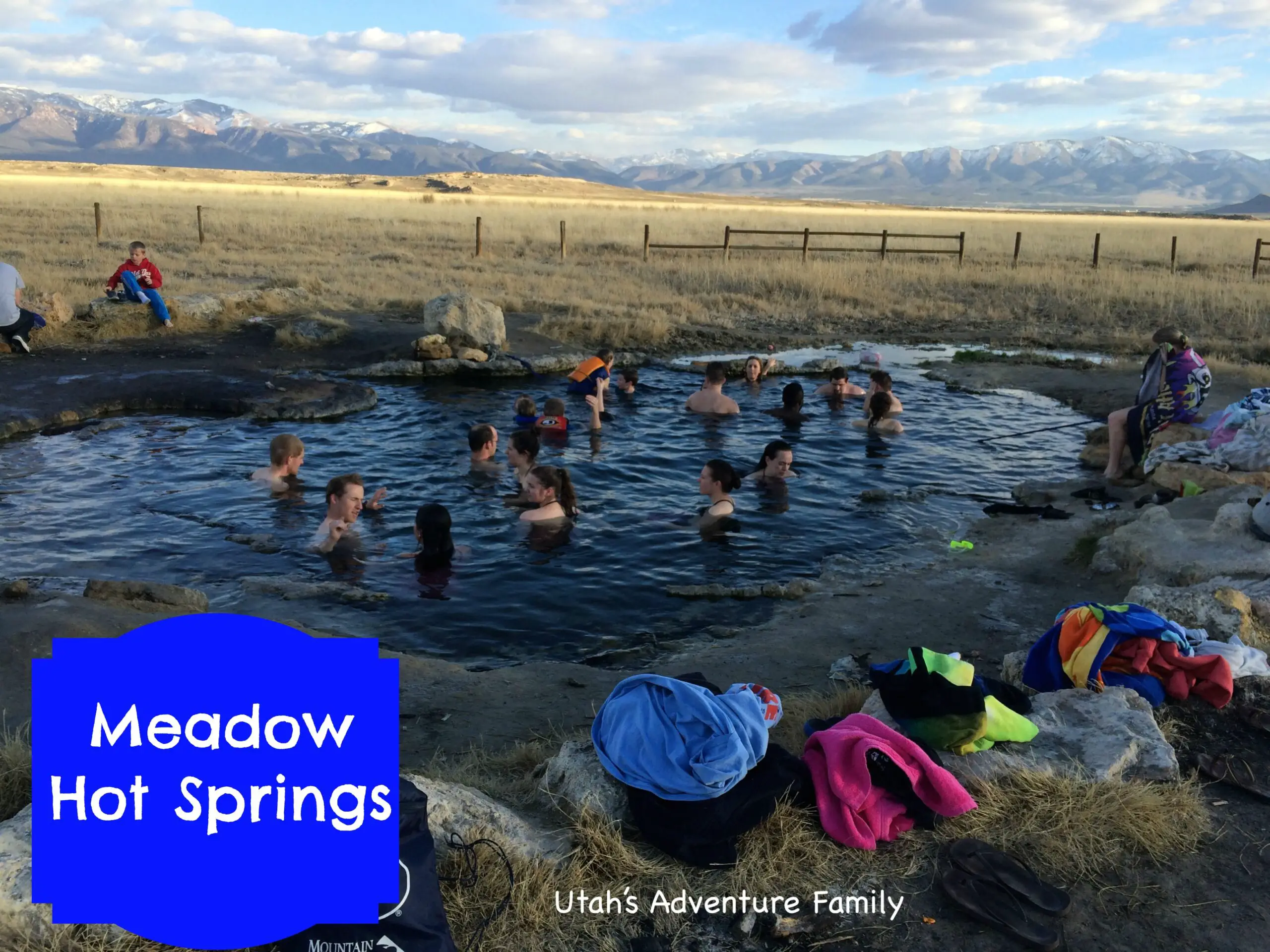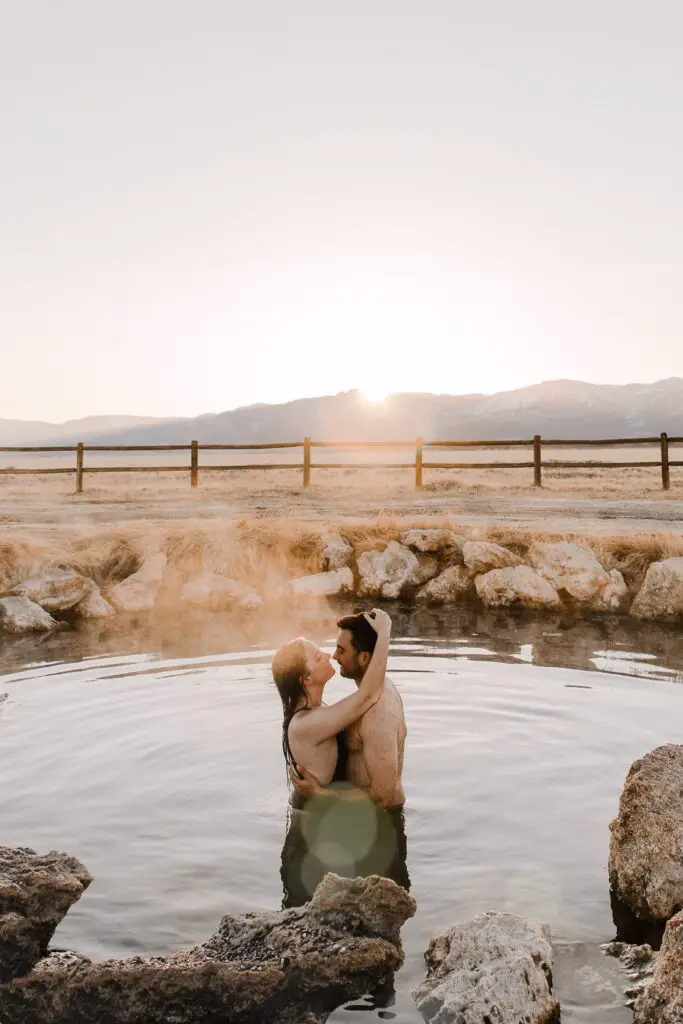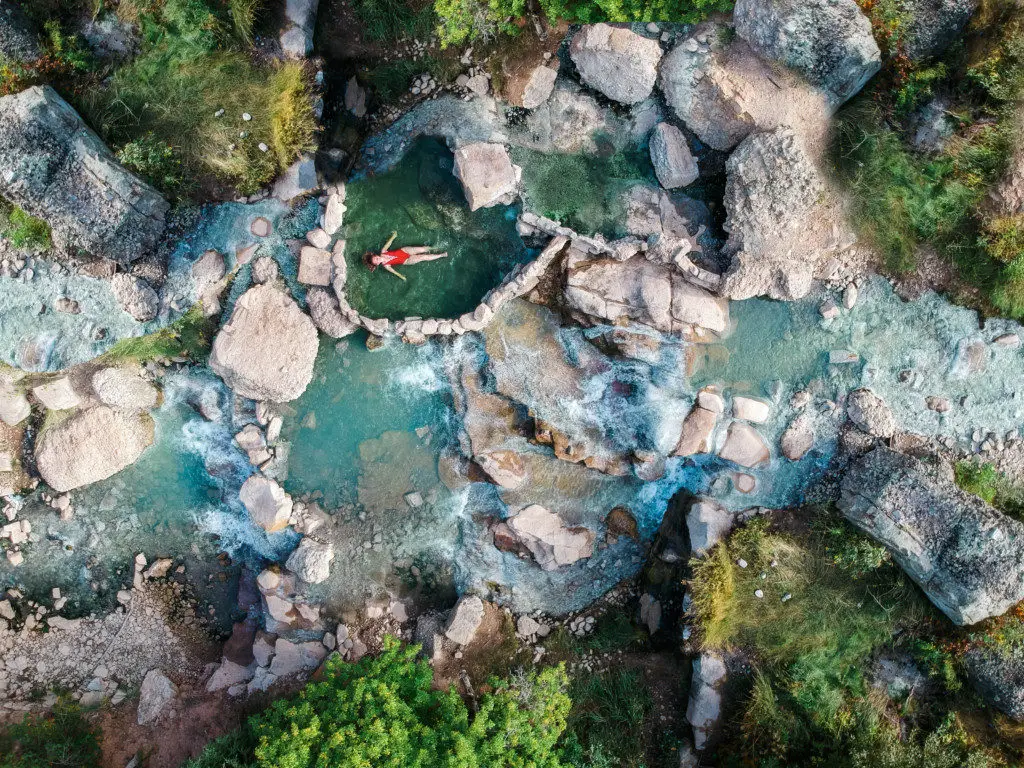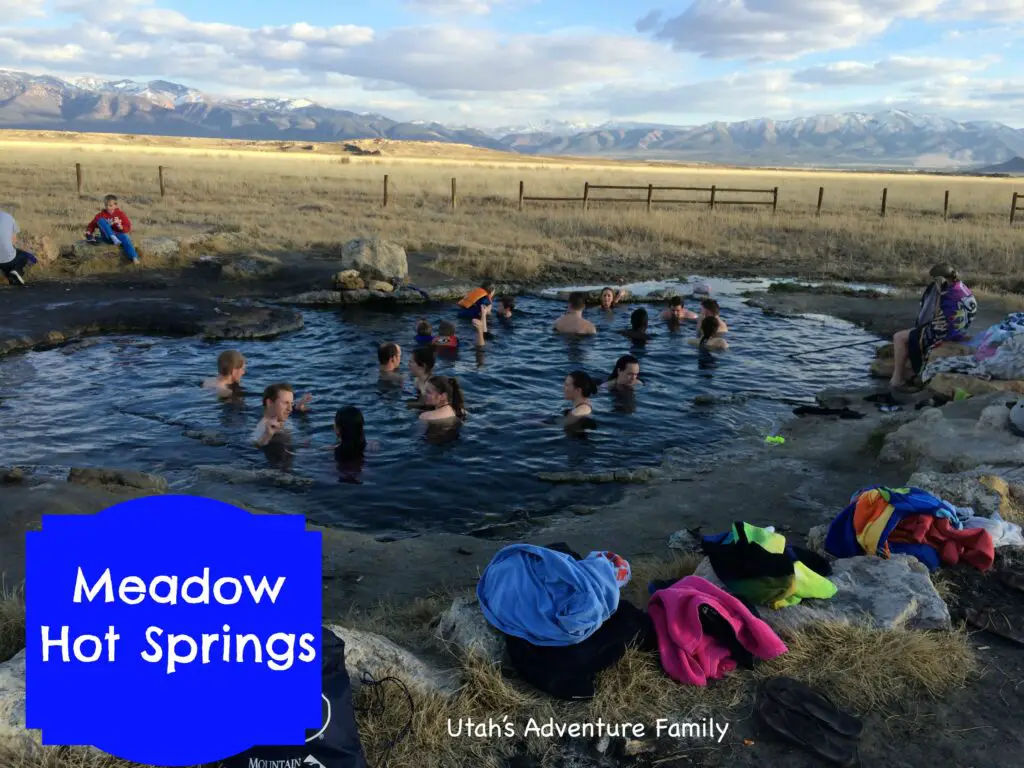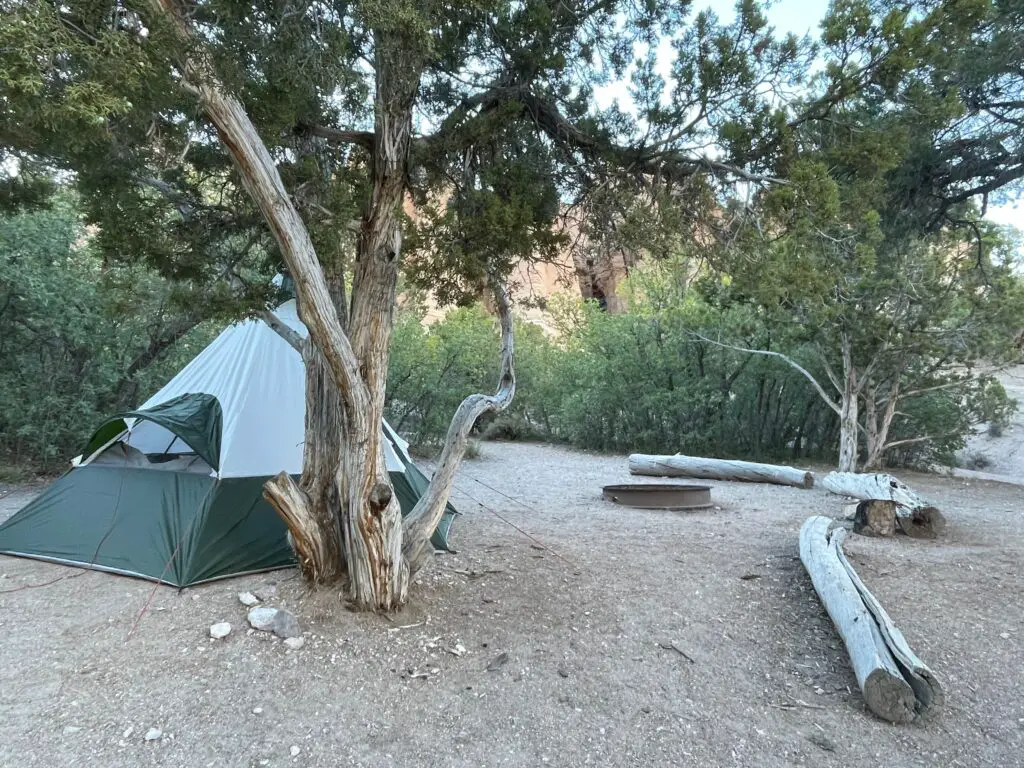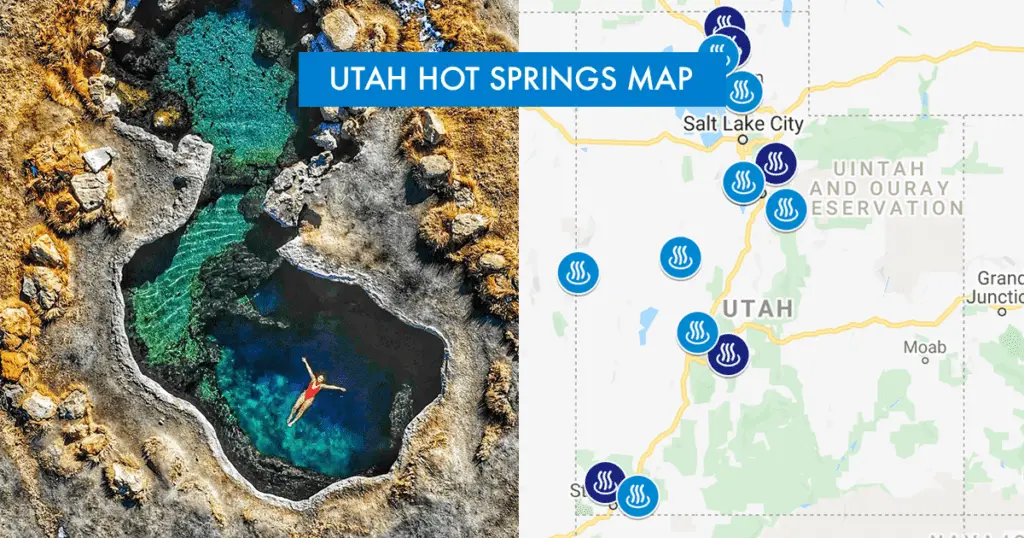Can you camp near any hot springs in Utah? Absolutely! Utah is home to many stunning hot springs that offer unique camping experiences. Imagine soaking in a natural hot spring while surrounded by breathtaking scenery and sleeping under the stars. It’s the perfect way to connect with nature and relax after a long day of exploring.
While some hot springs in Utah have designated campgrounds nearby, others allow primitive camping in the surrounding areas. Just make sure to check the specific rules and regulations for each hot spring as some may have restrictions or limited camping spots. But don’t worry, our comprehensive guide will provide you with all the information you need to find the perfect hot spring camping spot in Utah. So get ready to immerse yourself in the natural beauty of Utah’s hot springs and create unforgettable camping memories.
Hot Springs in Utah
Utah, known for its stunning landscapes and outdoor recreational opportunities, is also home to a variety of natural hot springs. These geothermal wonders are scattered throughout the state, providing a unique and relaxing experience for visitors. In this article, we will explore the geographical location of hot springs in Utah, their temperature ranges, the rules and regulations governing their use, and their accessibility.
Geographical location of hot springs in Utah
Utah is blessed with a diverse geography that includes mountains, deserts, and canyons. This unique landscape contributes to the presence of numerous hot springs throughout the state. From the famous Crystal Hot Springs in northern Utah to the lesser-known Fifth Water Hot Springs in Diamond Fork Canyon, there are hot springs to explore in every region.
Some hot springs are nestled high in the mountains, offering breathtaking views and a serene atmosphere. Others are located in remote desert areas, providing a tranquil oasis in the midst of the arid landscape. No matter where you find yourself in Utah, there is likely a hot spring waiting to be discovered.
Temperature range of hot springs in Utah
The temperature of hot springs in Utah can vary greatly, ranging from comfortably warm to scalding hot. While some springs offer a soothing soak at around 100 degrees Fahrenheit, others can reach temperatures of over 130 degrees Fahrenheit. It is important to exercise caution and check the temperature before entering any hot spring to avoid burns or discomfort.
Rules and regulations for hot springs in Utah
To ensure the preservation of these natural wonders and the safety of visitors, hot springs in Utah are subject to specific rules and regulations. These include restrictions on the use of soap and other cleaning products, limitations on alcohol consumption, and guidelines on proper waste disposal. It is crucial to familiarize yourself with the specific rules of each hot spring you visit and adhere to them to maintain the quality and sustainability of these natural resources.
Accessibility of hot springs in Utah
While some hot springs in Utah are easily accessible by car, others require a hike or even a four-wheel-drive vehicle to reach. It is important to research the accessibility of each hot spring before visiting to ensure you are adequately prepared. Some hot springs may have developed pathways or boardwalks, while others may require a more adventurous spirit and physical fitness.
Camping Near Hot Springs
Camping near hot springs in Utah provides a unique and immersive experience, allowing you to fully enjoy the rejuvenating benefits of these natural wonders. Whether you prefer primitive camping or more developed campgrounds, there are options available to suit every camping style.
Options for camping near hot springs in Utah
Utah offers a range of camping options near hot springs, catering to different preferences and needs. Many hot springs have designated camping areas nearby, allowing you to set up camp within close proximity to the soothing waters. These camping areas often provide basic amenities such as restrooms and picnic tables.
For those seeking a more secluded experience, dispersed camping is also available near some hot springs. This type of camping allows you to find your own spot away from designated campgrounds, providing a greater sense of tranquility and solitude.
Permits and reservations for camping near hot springs in Utah
To ensure a smooth camping experience near hot springs in Utah, it is important to check if any permits or reservations are required. Some hot springs have limited camping spaces and may require advanced reservations, especially during peak seasons. Additionally, certain camping areas may require permits, which can be obtained from the land management agency responsible for the area. It is advisable to plan ahead and secure any necessary permits or reservations to avoid disappointment.
Facilities and amenities available for camping near hot springs in Utah
The facilities and amenities available for camping near hot springs in Utah can vary depending on the location. Some campgrounds offer basic amenities such as restrooms, picnic tables, and fire pits. Others may provide more developed facilities, including showers, electricity hook-ups, and RV dump stations.
It is important to research and plan accordingly to ensure you have the necessary equipment and supplies for your camping trip. This may include bringing portable water containers, firewood, and camping gear suitable for the terrain and weather conditions.
Best Time to Camp
Choosing the best time to camp near hot springs in Utah is essential for an enjoyable and comfortable experience. While the availability of hot springs and camping areas varies throughout the year, there are ideal seasons and weather conditions to consider.
Ideal seasons for camping near hot springs in Utah
The ideal seasons for camping near hot springs in Utah depend on personal preferences and tolerance for different weather conditions. Spring and fall are popular seasons for camping, as the weather is generally mild and pleasant. The temperatures are usually moderate, making it enjoyable to soak in hot springs without feeling overheated or chilled.
Summer can also be a popular time to camp near hot springs, especially in higher elevations where the temperatures are cooler. However, it is important to keep in mind that some hot springs may become crowded during this season, especially on weekends and holidays.
Winter camping near hot springs can provide a unique and magical experience, as the surrounding landscapes are often covered in snow. However, it is crucial to be well-prepared and have the necessary gear and knowledge to camp in cold weather. It is also important to check if the hot springs you plan to visit are accessible and safe during winter months.
Weather conditions to consider for camping near hot springs in Utah
Utah’s climate can vary greatly depending on the region, with desert-like conditions in the south and alpine climates in the mountains. It is crucial to consider the specific weather conditions of the area you plan to visit before camping near hot springs.
During the summer months, temperatures can reach extremes in the desert regions, with daytime temperatures exceeding 100 degrees Fahrenheit. It is essential to stay hydrated, wear appropriate sun protection, and plan outdoor activities during the cooler parts of the day.
In higher elevations or during the winter months, snowfall and freezing temperatures are common. It is important to have appropriate clothing, gear, and knowledge of cold-weather camping techniques to ensure a safe and comfortable experience.
Guided Tours and Transportation
If you prefer a more structured approach to visiting hot springs in Utah, guided tours are available and can provide valuable insights and convenience. Additionally, understanding transportation options to reach hot springs is essential for planning your trip.
Guided tour options for visiting hot springs in Utah
Guided tours are an excellent option for those who want to learn more about the natural and cultural significance of hot springs in Utah. These tours are led by experienced guides who can provide informative commentary and ensure your safety throughout the trip.
Guided tours may include transportation to and from the hot springs, as well as additional activities such as hiking, wildlife spotting, or stargazing. They offer a hassle-free way to explore Utah’s hot springs while benefiting from the expertise of knowledgeable guides.
Transportation options to reach hot springs in Utah
There are various transportation options available to reach hot springs in Utah, depending on the location and accessibility of the springs. If you have your own vehicle, driving to the hot springs is often the most convenient option. Many hot springs have parking areas or designated spaces for vehicles.
For those without a personal vehicle, public transportation may be available to certain hot springs, especially those located near popular tourist areas. It is advisable to check local transportation routes and schedules before planning your trip.
Additionally, some hot springs may be located within national parks or protected areas, requiring visitors to use park shuttles or other forms of transportation provided within the park.
Unique Characteristics of Utah’s Hot Springs
Utah’s hot springs offer more than just a warm soak. They possess unique characteristics that make them special and worth exploring. From the mineral composition of the springs to the wildlife that calls them home, there is a fascinating array of features to discover.
Mineral composition of Utah’s hot springs
Utah’s hot springs are known for their mineral-rich waters, which can vary in composition. These minerals include calcium, magnesium, sulfur, and silica, among others. Some hot springs contain a mix of minerals that are believed to have therapeutic properties, and people often seek them out for their potential health benefits.
The mineral content also contributes to the unique colors and textures of the hot springs. Some springs may have vibrant hues due to the presence of specific minerals, while others may have a silky texture caused by the high silica content.
Many hot springs in Utah have developed small pools where visitors can experience the benefits of mineral-rich waters. It is important to follow any guidelines provided at each spring regarding the use of these pools and the recommended soaking duration.
Wildlife surrounding Utah’s hot springs
Utah’s hot springs attract a diverse range of wildlife, providing opportunities for nature enthusiasts and wildlife photographers. From birds and small mammals to larger animals such as deer or elk, hot springs can serve as vital watering holes in arid regions.
Birdwatchers can spot various species, including waterfowl, raptors, and songbirds, near hot springs. These areas often offer unique habitats, attracting both resident and migratory birds.
Mammals such as chipmunks, rabbits, and lizards can also be found around hot springs, taking advantage of the available water and vegetation. It is important to observe wildlife from a respectful distance and avoid feeding or disturbing them.
Variations in color and odor of Utah’s hot springs
Utah’s hot springs exhibit a wide range of colors and odors, adding to their allure and intrigue. Some springs may feature striking reds, oranges, or blues, giving them an otherworldly appearance. The vivid colors are often a result of the mineral composition and the presence of algae or bacteria.
The odor of hot springs can also vary greatly. Some springs have a distinct sulfur smell, while others may have no noticeable odor at all. The presence of sulfur is natural and safe, but it can result in a pungent scent that some find unpleasant. It is important to be prepared for the variations in color and odor when visiting different hot springs in Utah.
Health Benefits and Precautions
Hot springs offer more than just relaxation; they are believed to have several health benefits. However, it is crucial to take necessary precautions to ensure a safe and enjoyable hot springs experience.
Potential health benefits of hot springs in Utah
Soaking in hot springs is often associated with various health benefits. Some people find that the warm water and minerals help alleviate muscle and joint pain, improve circulation, and ease stress. The buoyancy of the water can also provide relief for those with certain medical conditions or injuries.
Additionally, the tranquility and meditative atmosphere of hot springs can promote mental relaxation and stress reduction. The combination of warm water, peaceful surroundings, and the healing power of nature can create a truly rejuvenating experience.
It is important to note that while hot springs can provide temporary relief for certain conditions, they are not a substitute for professional medical advice or treatment. It is always recommended to consult with a healthcare professional before incorporating hot springs into any health regimen.
Precautions for a safe hot springs experience in Utah
To ensure a safe and enjoyable hot springs experience in Utah, it is crucial to take certain precautions. These include:
-
Checking the temperature: Before entering any hot spring, it is essential to check the water temperature to avoid burns or discomfort. Some hot springs have areas with varying temperatures, so it is advisable to test the water before fully immersing yourself.
-
Staying hydrated: Soaking in hot springs can lead to dehydration, especially in warmer weather. It is important to drink plenty of water before, during, and after your hot springs experience to stay properly hydrated.
-
Avoiding sensitive areas: Some hot springs may have designated areas or pools that are off-limits due to their fragile ecosystem or potential safety hazards. It is important to respect any signs or guidelines and avoid entering restricted areas.
-
Practicing good hygiene: To preserve the cleanliness and natural balance of hot springs, it is crucial to avoid using soap, shampoo, or any other cleaning products. These can disrupt the natural environment and harm the delicate ecosystems surrounding the springs.
-
Being cautious with alcohol consumption: While it may be tempting to enjoy a drink or two while soaking in a hot spring, it is important to consume alcohol responsibly. Alcohol can impair judgment and coordination, increasing the risk of accidents or injuries.
By following these precautions and being mindful of your own safety and that of others, you can fully enjoy the beneficial and relaxing qualities of hot springs in Utah.
Family-friendly and Clothing-optional Springs
Utah’s hot springs cater to a range of preferences, including families and those looking for clothing-optional experiences. Whether you’re planning a family outing or prefer a more liberating soak, there are options available in Utah.
Hot springs in Utah suitable for families
Utah offers several family-friendly hot springs where parents can relax and children can play safely. These hot springs often have shallow pools or sandy areas suitable for young swimmers. They may also provide picnic areas or open spaces for families to enjoy a day out in nature.
It is important to check the specific rules and regulations of each hot spring regarding suitable ages for children and any additional safety guidelines. Some hot springs may have restrictions or recommendations for young children to ensure their safety.
Clothing-optional hot springs in Utah
For those seeking a more liberating hot springs experience, Utah also has clothing-optional options available. These hot springs provide an opportunity to enjoy nature in a more unrestricted manner, allowing visitors to soak without clothing if they choose.
It is important to note that clothing-optional hot springs may be limited to certain designated areas or specific times. It is essential to check the rules and regulations of each hot spring before visiting and to be respectful of others’ choices and boundaries.
Wheelchair Accessible Springs
Utah recognizes the importance of accessibility and inclusivity, and there are hot springs in the state that are wheelchair accessible. These hot springs have infrastructure in place to accommodate individuals with mobility challenges, allowing them to enjoy the therapeutic benefits of geothermal waters.
Facilities such as paved walkways, ramps, and accessible changing rooms are provided to ensure a comfortable and safe experience for wheelchair users. It is important to research and plan ahead to identify the hot springs that offer wheelchair accessibility.
Environmental Preservation
Preserving the natural beauty of Utah’s hot springs is of utmost importance to ensure their continued existence and enjoyment for future generations. It is everyone’s responsibility to minimize their impact and respect the fragile ecosystems surrounding these geothermal wonders.
Here are some tips for preserving the natural beauty of hot springs in Utah:
-
Pack out what you pack in: It is essential to practice Leave No Trace principles and take all your trash with you when you leave. This includes any food wrappers, beverage containers, or other waste generated during your visit. Properly dispose of trash in designated waste receptacles or take it with you until you can dispose of it appropriately.
-
Respect wildlife and vegetation: Avoid disturbing or feeding wildlife around hot springs. Respect their natural habitat and observe from a distance. Additionally, be mindful of vegetation and avoid trampling or damaging plants and trees.
-
Follow all rules and regulations: Hot springs in Utah have specific rules and regulations in place to protect their natural beauty and ensure the safety of visitors. It is crucial to follow these rules, including restrictions on soap, alcohol, and waste disposal. Be respectful of any signage or guidelines provided.
-
Stay on designated trails and paths: Help minimize erosion and damage to the surrounding environment by sticking to designated trails and pathways. Avoid creating new trails or pathways, as this can harm fragile ecosystems and disrupt natural vegetation.
-
Educate others: Spread awareness about the importance of environmental preservation and responsible hot springs use. Encourage others to follow these tips and to be mindful of their impact on the environment.
By following these preservation tips, you can contribute to the protection and conservation of Utah’s hot springs, ensuring their beauty and availability for future generations to enjoy.
Conclusion
Utah’s hot springs offer a unique and rejuvenating experience, providing a mixture of relaxation, natural beauty, and potential health benefits. Whether you’re seeking a family-friendly outing, a clothing-optional experience, or a tranquil escape into nature, Utah’s hot springs have something for everyone.
By understanding the geographical location, temperature ranges, rules, and regulations of hot springs in Utah, you can plan a safe and enjoyable visit. Consider the accessibility and transportation options available, and don’t forget to explore the unique characteristics of each hot spring, from their mineral composition to the wildlife they attract.
Camping near hot springs allows for an immersive and holistic experience, with options available for every camping style. Be sure to check the best time to camp and the weather conditions to make the most of your outdoor adventure.
Remember to take necessary precautions, such as checking the temperature, staying hydrated, and following any guidelines provided at each hot spring. Be respectful of the environment and preserve the natural beauty of hot springs for future generations.
Utah’s hot springs are waiting to revitalize your body and soul, so pack your camping gear, plan your visit, and immerse yourself in the healing power of nature. Can I camp near any hot springs in Utah? Absolutely! Enjoy your hot springs adventure and create memories that will last a lifetime in the beautiful state of Utah.
